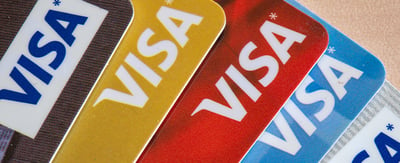TC40 Data and Fraud
By Chris Alarie on Apr 5, 2023
Merchants may have heard the term “TC40 data” or “TC40” reports without necessarily knowing what it means. This data is an important part of fraud detection for banks and card brands but its utility to merchants is more indirect.
What Is TC40 Data?
TC40 data is information exchanged between banks and card networks whenever a merchant has an outstanding fraud claim. If a cardholder makes a fraud claim against the merchant, a TC40 data claim is created by the issuer and sent to the acquiring bank and the card network. TC40 data files are often very large and include communications between banks and card networks.
What Is the Purpose of TC40 Data?
It is used for communications between the banks and card brands to determine a merchant’s fraud risk level. The format of the data and whatever thresholds exist for how the amount of TC40 reports relate to potential merchant consequences is designed for banks and card brands to understand, with little heed paid to how merchants may interpret it. In fact, TC40 data is not shared directly with merchants unless they request it and sometimes not even then.
Does TC40 Data Have a Use Related to Chargebacks?
TC40 data does not directly relate to chargebacks or chargeback prevention. There is a misperception amongst some merchants that a TC40 data report is an indication that a chargeback will be filed and that merchants can use those reports as an early warning to take measures to avert the chargeback. But TC40 data is not designed for communications with merchants. It’s for banks-to-bank and bank-to-card brand communications.
TC40 data can have an indirect impact on merchants’ efforts to prevent chargebacks, however. The TC40 data is a key input for the compliance programs of the card brands—Risk Identification Service (RIS) for Visa and Fraud and Loss Database (FLD) for Mastercard. TC40 reports are used in calculating fraud ratio and can be factors in determining whether or not to put a merchant into a fraud monitoring program.
Additionally, some fraud or chargeback prevention tools may use TC40 data as part of their functioning. And while merchants are not automatically given TC40 data, they can request it. If they are given that data, it is conceivable that it can provide insights into fraud risk patterns that can help the merchants develop plans to reduce chargebacks. But all of these relationships between TC40 data and chargebacks are indirect.
Conclusion
Essentially TC40 data is a tool that is more useful to other players in the payments process besides merchants. This isn’t to say that merchants don’t need to understand TC40 data and that it can’t affect chargebacks. But they should just be one element of a larger fraud and chargeback prevention program.


